Last month, Magdalena Bay shared a pair of tracks that marked their first new music since their sophomore album Imaginal Disk. Today, they’re back with two more: ‘Human Happens’ is driven by an insistent, kinetic low end that swirls out in the chorus, while ‘Paint Me a Picture’ is equal parts bouncy and dizzying. “Here’s another pair of songs that complement each other,” the band said in a press release, teasing another drop. “Different than the last, different than the next.” Take a listen below.
The Effect of Online Gambling On Your Sleep Schedule
Entertainment takes different forms which may be good for you. But have you ever considered its dangers? How bad can it be from having fun to experiencing serious problems, including lack of sleep? Well, it can be very bad, especially in situations where there is abuse or overuse.
Online gambling, for instance, has become the talk of town for some years now. Its concept is such a unique one, i.e., allowing people to access a wide range of casino games or sports markets on their mobile phones, anywhere and anytime. The comfort and convenience are unmatched, reducing the need to visit a physical gambling location (or casino). However, while this happens, what does this mean for your health?
This article explores the negative impacts of online gambling on your mental health, sleep patterns, and general well-being.
24/7 Gambling and Accessibility
Usually, traditional land-based casinos are known to operate at specific hours, which means you can only access them during their open schedules. It could be between morning and noon or till a particular time in the evening. However, this isn’t the same with online casinos.
If someone ever mentioned online gambling, one of the things that would definitely come to mind is 24/7 gaming. It is an avenue for playing games any time of the day as long as resources, i.e., smartphone or pc and an internet connection is available. Due to this nature of convenience, there is potential harm because some people would rather sacrifice resting hours to gamble in, say, a sweepstakes casino.
In the worst-case scenario, many online gamblers find themselves playing games deep into the night just in an attempt to win big. In the process, they compromise their sleep schedules and their quality of life. Studies show that there is a relationship between gambling severity and sleep – addictive gambling leading into late nights and disrupted sleep patterns often increases the risk of insomnia and other sleep disorders.
Physiological Impact of Online Gaming On Sleep
As mentioned earlier, online gambling affects the quality of a person’s life, but a more precise way to put it is the physiological impact on sleep.
It is not surprising that online gambling may affect someone’s mental health in various ways and that is because the brain is actively involved in the process. There is a substance called dopamine which is often released when the brain’s natural reward system is activated. When this happens, it creates a feeling of excitement, which clearly shows that you are enjoying the game.
However, in a situation where you don’t get enough sleep and there is an overstimulation of this hormone, it may be difficult to transition to sleep when you want to. This difficulty in sleeping often results in increased frustration, anticipation, and stress.
Sometimes, this lack of sleep triggers impulsive behavior and repetitive actions. It can be difficult trying to correct yourself back to normal. So, you find yourself logging off from the game but constantly thinking of what to do and then return to it again just so your brain could feed that missing piece. This is when it turns into addiction gambling.
Online Gambling and Circadian Rhythm
Our bodies operate on a circadian rhythm model – a 24-hour cycle. Within this rhythm, there is the time to engage in other activities and finally the time to sleep. If there is any disruption in one part of the cycle, it affects the others.
For instance, if you choose to play games online while you are supposed to sleep at night, your body automatically adjusts in such a way that you sleep during the day. When this happens, your circadian rhythm has been altered.
Now, this doesn’t just occur; there are usually precursors. For example, the blue light exposure from your mobile device or pc suppresses a hormone called melatonin, which is responsible for sleep. During prolonged exposure, there is a delay in the onset of sleep, impacting your circadian rhythm, and affecting your sleep quality.
How To Improve Sleep as an Online Gambler
Becoming a victim of poor sleep quality as an online gambler isn’t exactly ideal. You need to be able to balance out your time of gaming and that of resting. Contrary to popular opinion, there is no better time to win in gambling – just because you stay up at night doesn’t increase your chances.
Here are five tips we think would help to improve your sleeping pattern/schedule:
● Set Time Limits
One of the best things you can do for yourself so that your sleep schedule doesn’t get affected by gambling is to set time limits. You need to choose a time of the day other than the time you sleep at night for your gamble sessions. To remain accountable, you can set an alarm or consult with the casino operator to set time limits to enable you to control your gambling habit.
● Always Wind-Down
Choosing another wind-down routine is also a great idea. You should find other things to do, such as reading, meditating, socializing with friends and family, etc., to help you curb your gambling addiction. If all you think about doing is gaming, there is no way it won’t affect the quality of your sleep.
● Reduce Blue Light Exposure
As previously mentioned, melatonin is suppressed by blue light and the only way to get rid of that is to limit exposure. You can either do this yourself by choosing times of the day you want to spend time on your mobile device or setting a screen time. With the latter, your device only allows you for a number of hours during the day and once that is exceeded, you don’t get to use it anymore.
● Gamble Responsibly
This is self-explanatory. It helps you to be in control and protects your integrity as an online gambler.
●Seek Professional Help
If you ever find yourself in a difficult situation such as addiction gambling and poor sleep schedule, you should seek professional help. You can check with the casino for some recommendations.
Conclusion
Gambling can be fun, but when it starts affecting your quality of life, it isn’t. You may find out that something so entertaining has ruined many people’s lives and you aren’t about to be the next. Like we suggested, only choose reasonable times of the day to gamble and ensure that it doesn’t affect the rest of the activities you have. Above are tips that we think should help; you can choose to follow them to maintain a good work-life balance and protect your physical and mental health.
Family-Friendly Things to Do in Maryland
Let’s be honest—keeping kids entertained isn’t always easy. Especially when you’re juggling work, errands, school runs, and a never-ending laundry pile. You want to create memories, do something special with them, but some weekends just vanish before you even catch your breath.
Good news: Maryland is packed with genuinely fun, kid-friendly places that don’t require a five-hour road trip or an entire day’s planning. Whether you’re looking for outdoor adventures, rainy day saviors, or just something different to shake up your routine, this list has you covered. Bonus? These spots are actually enjoyable for parents too.
So if you’re thinking, “What should we do this weekend?” keep reading.
Let the Kids Run Wild (Outside)
First up: sunshine. When the weather’s decent, outdoor space is gold. Maryland has a bunch of spots where kids can burn energy and you can breathe easy.
- Sandy Point State Park: Right on the Chesapeake Bay, this spot has a sandy beach, shallow water for wading, and shaded picnic tables. It’s a low-effort day trip that feels like a mini vacation.
- Great Falls (Maryland Side): Want views and trails that don’t feel like punishment? Great Falls offers just that. The Billy Goat Trail has some family-friendly sections that make kids feel like explorers without pushing them too hard.
- Brookside Gardens in Wheaton is pure calm. There’s space to roam, beautiful gardens, and even a butterfly exhibit in season. Great for strollers and snack breaks on a bench.
Learn Something (Without the Eye Rolls)
Not all educational outings are boring—promise. Maryland has some standout spots that sneak in learning while your kids think they’re just having fun.
- Port Discovery Children’s Museum in Baltimore is a hands-on haven. Climbing structures, water tables, pretend play zones—you name it. It’s chaos in the best possible way.
- Maryland Science Center is right nearby and great for slightly older kids. Dinosaurs, a planetarium, an IMAX theater… Plus, the grown-ups might actually learn something too.
- College Park Aviation Museum is a quieter option with some seriously cool planes. It’s small enough that you won’t lose a child (or your sanity), but still super engaging.
Seasonal Fun and Farm Days
If your family calendar revolves around pumpkin patches and strawberry picking, you’re in luck. Maryland’s local farms are loaded with activities.
- Butler’s Orchard in Germantown is a family favorite for a reason. Their pick-your-own fields rotate through the seasons, and there’s always something going on, from hayrides to festivals.
- Clark’s Elioak Farm in Ellicott City is a fairy tale brought to life. It’s built around the old Enchanted Forest amusement park, so there’s this cool nostalgic vibe mixed with petting zoos and pony rides.
- Keep an eye out for local festivals too—from summer food truck fests to fall harvest fairs. They’re perfect for low-pressure, go-with-the-flow kind of outings.
When It’s Raining (Or Everyone’s Just Cranky)
Let’s face it. Some days, the weather sucks. Or the mood does. That doesn’t mean you’re stuck at home with YouTube Kids blaring.
- Storyville Libraries in Baltimore County are like mini play worlds built into library branches. They’re calm, creative, and FREE. Great for toddlers and preschoolers.
- Trampoline parks like Sky Zone or Launch can be a total lifesaver. Let them bounce themselves tired while you sip a coffee in peace.
- Check out play cafés in your area. These parent-friendly spots combine indoor playgrounds with actual food and coffee that isn’t from a drive-thru.
Making Time for All This Is the Real Challenge
Let’s be real—even when you have a list of great ideas, actually getting out and doing them is another story. Between jam-packed calendars and everyday stress, it’s easy for plans to fall through.
That’s where support at home can make a real difference. Having an extra set of hands means less scrambling and more room for fun. For families looking for a reliable, flexible way to make that happen, hosting an au pair in Maryland can be a total game-changer.
It’s not about replacing you—it’s about sharing the load. When someone helps with pickups, homework, and the bedtime hustle, there’s just more space for the good stuff. Like impromptu outings. Or quiet moments that don’t feel rushed. That kind of support can turn a chaotic Saturday into something simple and sweet.
Simple Stuff That Still Works
Sometimes you don’t need an epic plan. You just need something doable.
- Try a scavenger hunt walk around your neighborhood. Make a quick list: something red, a squirrel, a leaf bigger than your hand. Kids love a mission.
- Pack snacks and take a bike ride on the Capital Crescent Trail or another nearby path. No pressure to go far. It’s the movement and novelty that counts.
- Mini golf or duckpin bowling is an underrated classic. It’s competitive (but in a fun way), and even little kids can get into it with some help.
You Deserve the Good Stuff Too
At the end of the day, these family outings aren’t about checking a box or posting cute photos. They’re about connection. About making space for joy in the middle of the chaos.
So whether you’re packing up for a full-day adventure or just heading down the street for mini golf and ice cream, give yourself credit. You’re showing up. You’re making memories.
And that’s what really counts.
Sam Fender Wins 2025 Mercury Prize for ‘People Watching’
Sam Fender took home the 2025 Mercury Prize, awarded by a panel of music industry figures to the best British album of the year, for his album People Watching. The North Shields singer-songwriter beat out records by FKA twigs (Eusexua), PinkPantheress (Fancy That), Fontaines D.C. (Romance), Pulp (More), Pa Salieu (Afrikan Alien), Wolf Alice (The Clearing), CMAT (Euro-Country), and more.
Last year, English Teacher won the award for their album This Could Be Texas. Fender was previously shortlisted for the Mercury Prize in 2022 for Seventeen Going Under.
KISS’ Ace Frehley Dead at 74
Ace Frehley, the legendary lead guitarist of KISS, has died following a recent fall at his home. The musician had canceled all his remaining tour dates earlier this month. He was 74 years old.
“We are completely devastated and heartbroken,” Frehley’s family shared in a statement. “In his last moments, we were fortunate enough to have been able to surround him with loving, caring, peaceful words, thoughts, prayers and intentions as he left this earth. We cherish all of his finest memories, his laughter, and celebrate his strengths and kindness that he bestowed upon others. The magnitude of his passing is of epic proportions, and beyond comprehension. Reflecting on all of his incredible life achievements, Ace’s memory will continue to live on forever!”
Born in the Bronx in 1951, Frehley began playing guitar as a teenager in the ’60s. He performed in several bands before answering Paul Stanley’s ad in 1972 looking for a lead guitarist. After auditioning to get in, Frehley designed the logo for KISS and adopted the persona of “Space Ace (later “the Spaceman”) because he was into sci-fi.
The band signed to the disco label Casablanca and released their self-titled debut in 1974. Frehley played on most of the band’s iconic albums, including Destroyer, and Alive!, and occasionally sang lead. In 1978, all four KISS members released solo albums, and Frehley’s was the biggest of the bunch, with his LP featuring a cover of Hello’s disco hit ‘New York Groove’ that landed on the Billboard singles chart.
Frehley parted ways with KISS in 1982, and his band Frehley’s Comet released their self-titled debut in 1987. He continued putting out solo records, most recently 10,000 Volts last year. In 1996, all four original KISS members reunited for the album Psycho Circus and toured in full makeup. In 2001, Frehley published his autobiography No Regrets: A Rock’n’Roll Memoir.
“We are devastated by the passing of Ace Frehley,” Frehley’s former bandmates Gene Simmons and Paul Stanley said in a statement. “He was an essential and irreplaceable rock soldier during some of the most formative foundational chapters of the band and its history. He is and will always be a part of KISS’s legacy. Our thoughts are with Jeanette, Monique and all those who loved him, including our fans around the world.”
Jay Som on 5 Things That Inspired Her New Album ‘Belong’
Though Belong marks Jay Som’s first new album in six years, Melina Duterte has had a hand in some of the best music to come out of each of those years. In addition to releasing a record with Palehound’s Ellen Kempner in as Bachelor in 2021, she worked on records that led several bands to be featured in our Artist Spotlight series: Tenci and Living Hour in 2022, Fenne Lily and Chris Farren in 2023. Just in the past couple of years, she helped produce boygenius’ the record and Lucy Dacus’ Forever Is a Feeling. When the time came to revisit her solo project, Duterte felt the urge to open up her sound to outside collaborators, enlisting contributions from Joao Gonzalez (of Soft Glas), Mk.gee/illuminati hotties collaborator Mal Hauser, Steph Marziano, and Kyle Pulley, as well as guest vocals from some of her biggest heroes, including Paramore’s Hayley Williams, Jimmy Eat World’s Jim Adkins, and Mini Trees’ Lexi Vega. Belong is expansive and exciting at every turn, clearly energized as much by Duterte’s experimental impulses as her nostalgic love for classic alternative rock. Even when they lean into moodier, more subdued territory, these songs aren’t meant for sulking, but as Duterte puts it on ‘Past Lives’, spiraling up. It’s good company to feel a part of.
We caught up with Jay Som to talk about Jimmy Eat World’s Bleed American, the O.C. soundtrack, Atwater Village, and other inspirations behind her new album Belong.
Bleed American by Jimmy Eat World
Was the record a reference point before Jim Adkins entered the picture as a collaborator on Belong?
Yeah, that was an easy choice. I think that album and just the Jimmy Eat World alternative rock world was the catalyst for doing something different in this new record. Leaning heavily towards alternative rock versus doing what I did before, which is just shoegaze, dream pop, indie, bedroom-ish music. And it’s an album that means a lot to me. My brother and I really love this album. We bought it at a Barnes & Noble, and it was when Barnes & Noble had CD sections and a Starbucks, so we would hang out all day on Saturdays or Sundays and just peruse the CDs. They also had headphones, so you could listen to samples of the CDs, which was my favorite thing to do. I’d just stand there listening to all these artists, and Bleed American was one of them.
It did change my life and still holds up to this day. It sounds like it could have come out yesterday. The songwriting is just expert-level songwriting, and the way that they’re performing is as if it’s the end of the world and they need to record this right now and show it to you. It’s very immediate. Jim’s vocals are really incredible, and a big reason why I had him on ‘Float’. ‘Float’ was the first song that I wrote and recorded for the record, so to have that Jimmy Eat World spirit and be the stamp of the initial song for the record, was really important moving forward throughout the process.
Did you ask him questions about Bleed American, or did you shy away from really getting into it?
I kept it pretty professional. Until the very end, when we were texting, and I just got to be like, “Hey, thank you so much,” and I got to tell him the story about the Bleed American CD stuff. There was a second where we were texting back and forth, and he’s a huge gearhead. He has a studio, and he loves recording music, so we bonded for a second that way. I still haven’t met him in person, so I’m hoping that’ll happen soon one day.
Atwater Village, CA
I’ve lived here since June 2020, so right in the middle of the pandemic. My partner and I and our friend found this home that I’m in right now, and our former roommate used to live in this room, and she lived here for a couple years. I feel like I had my second puberty here – I don’t know how to say it – in a musical sense. I had a studio up in the attic, and I was recording a bunch of friends, I was mixing, I learned how to become even more of a gear nerd. I spent so much time in this house just creating and learning, and I’ve had so many friends and bands and artists come through to record or mix. By the time I started making my own record, I felt like a completely different person, and I kind of didn’t recognize my recording skills, techniques, or even my taste.
I think when you work with people for so long, you do start to lose a kind of sense of your identity if you’re doing the same job as them – music. Working with a lot of solo artists, I’m in a place of supporting them and helping them realize their vision. So by the time I had all my gear set up and everything’s fully realized, I got better at engineering, I remember thinking, “I need help.”
I think being able to live a domestic lifestyle in Atwater was really important. I have a dog, she’s right there behind me – she’s always right there. I get to go outside for walks, and there’s a coffee shop 10 minutes away. We would go to the farmer’s market all the time. Just to clear my head, I’d walk around here. This neighborhood’s full of really beautiful creatives. There’s a guy that teaches ukulele classes every Tuesday. There’s a guy across the street that plays a tuba with his door open. When you walk down the street, you hear him playing the tuba, and it’s very goofy, but it’s really cool. There’s three drummers around the blocks. And then there’s me, a very loud person. There’s just something about the community and the energy here that I really like and sets it apart from certain places that I’ve been in in LA.
Was it a strange feeling, then, to take these songs to different studios and be removed from the place where they were maybe conceived?
Yeah, it felt different. To leave Atwater for a second was a little hard, because you get used to your routine. But to leave to go to Nashville or Philly was actually really fun and honestly necessary, because I felt less distracted when I was not in LA. And I did that with my last record, too. I went to Joshua Tree for a week, and that helped me write even more. To be in Philly helped a lot with just inspiration and not feeling like I needed to get an errand done, or I needed to see this friend that I haven’t seen in a while, and just focus on the job.
The O.C. soundtrack
You’ve talked about it opening your eyes in terms of music, as it did for a lot of people, especially indie rock music. Do you tend to go back to it often, or is it something that just sits in your mind?
Yeah, it’s always in my mind. I feel like I was introduced to Pinback through it, and I already loved Death Cub for Cutie, but they were big at the time, and they were in an episode, too. I just feel like whoever was the music supervisor for that show did an amazing job in introducing me to so many artists on that roster. One of my favorite things about music supervisors, especially when they’re good, is that they know how to control a scene. They make you feel something, not just with the emotions from the actors, but from the music – when it plays, which section of the song it plays, how long the song plays for, whether it’s an instrumental or if it’s a lyrically driven portion of the song for a scene. I feel like they got that. There’s a scene with some of the main characters and ‘Hallelujah’, the cover by Jeff Buckley plays – amazing choice, I still think of that.
My co-producer, Joao Gonzalez, who basically co-produced the whole record with me, is also a gigantic OC fan, and we mention it a lot. We were obsessed with Seth Cohen, and we really wanted to be just like him. He’s kind of this nerdy, know-it-all music dude, a lovable, affable character. But it’s also because I live in California, too, and there’s the nostalgic element of all the alternative rock that comes out of here.
When I think of great modern indie rock soundtracks, my mind goes to I Saw the TV Glow, which you of course contributed to. What was that experience like? Do you wish that kind of compilation happened more often for TV and movies?
Yeah, I thought that was an incredible thing to be a part of. Jane [Schoenbrun] was amazing, and they came to me with a vision, along with the other artists on the soundtrack. They said, “Here’s this prompt for you, can you just do it?” They gave me a Spotify playlist, and I thought it was just the coolest thing. There was no controlling element. It was very much like, “I came to you for a reason, can you do your thing, but with the lens of making a Teenage Fanclub song?” And yeah, I don’t see that often with films. Maybe there are more examples, but what? The Minions soundtrack with Tame Impala? Not to compare it to the Minions soundtrack, but that’s the only thing I can think of.
Phoebe Bridgers is on both of those soundtracks, so she’s kind of the connecting link.
Yeah, Phoebe’s on there. Love her.
trip9love…??? by Tirzah
This one stands out as a unique reference point, but it makes sense through the lens of songs like ‘Meander/Sprouting Wings’ or even ‘A Million Reasons Why’. Is that where it fits in?
100%. I’ve been taking in and processing reviews from people and comments from some people, and many people are not into the second half of the record. And I understand why. It’s because it’s the weirder side of my music taste, which is something that I love. Me and Joao constructed the sequencing for the record so fast, and it just made sense to us. It made sense to put ‘Meander/Sprouting Wings’, ‘A Million Reasons Why’, and ‘Want It All’ all together, because it just was something that I loved
There’s something about trip9love…??? that is so bizarre, but I love it. It sounds like one song throughout the entire album. It uses the same drum loop, same piano loops here and there, and the melodies are kind of off. But to me, it feels so free. There’s no reason why they did this or that – maybe the intention is just because they liked it, and it sounded cool, and there’s no deep artistic reason why everything’s so repetitive and so bizarre. But to me, as a listener, I can get really lost in this record. There’s the droney element of it all, and I just am a fan of bizarre choices in records. It keeps me on my toes. I also love pop music, too, I love standard formulas and keeping people excited. But it’s just a weird little guy.
What did you enjoy about dipping into that hazier, otherworldly place for that section of Belong?
I think what appealed to me is that it felt like a comedown from the top of the record. I really love science fiction, and that also relates to the next inspiration, but just otherworldly fantasy, fictional-type stories, and the visual representations of that. I think ‘Meander/Sprouting Wings’ was my chance to experiment with that world, because it’s something I’ve always wanted to do, and those songs came the most natural to me. The headspace that I was in was basically just thinking, these two songs live in this world together, I can’t separate them. They complement each other in some way, and I don’t know why, but I don’t want to separate them, so it became this two-song, one-song thing.
‘A Million Reasons Why’ as the penultimate song just sounded like a sample, but without a full song in it. I was just imagining taking out a sample for a song – how French House was always taking songs from the ‘70s or disco tracks, making full songs out of them. I just remember thinking, what if I just did a sample song, and it kind of sounded like a voicemail. It gets pretty moody towards the end, but it felt fun.
The German Netflix show Dark
I love this TV show. It’s really amazing, and I watched it twice. The first time, I watched it in German with subtitles, and the second time, I watched it in English dub. There’s something very inspirational about the the craft of it all – the actors, the script, the music, everything was so intentional. They just went for it. There’s twists and turns, there’s some weirdness, there’s beautiful romance. I would pause scenes sometimes to just jam or write music, because sometimes when I watch something that affects me really deeply, I need to pause it for a second, and then continue. That was one of those really inspiring TV shows to watch. It was always in the back of my head throughout the record-making process this year.
This interview has been edited and condensed for clarity and length.
Jay Som’s Belong is out now via Lucky Number.
Danny Brown Enlists underscores for New Song ‘Copycats’
‘Starburst’, the lead single from Danny Brown’s much-anticipated new album, made our list of the best songs of September. Today, the iconoclastic rapper has shared another revved-up hyperpop single, a collaboration with underscores called ‘Copycats’. Check it out below.
Stardust is set for release on November 7 via Warp.
Blood Orange Joins Sassy 009 on New Song ‘Tell Me’
Sassy 009 has joined forces with Blood Orange for the fuzzy, haunting new song ‘Tell Me’. Check it out below.
“This song has been sitting with me for a few years,” Sunniva Lindgård explained in a press release. “It all started with a particular mood but I couldn’t quite seem to finish the song. I had the idea to send it over to Dev. I’ve been waiting for the moment for us to make a song together ever since we met in Amsterdam back in 2019, and I really couldn’t hear anyone else but him on it. So happy I followed my gut.”
‘Tell Me’ is the latest single from Sassy 009’s upcoming LP Dreamer+, which is out January 16 and includes ‘Butterflies’, one of the best songs of September. Blood Orange released his newest album, Essex Honey, in August.
Rakee Chen x LiberLive: Fashion Meets Music Tech in a Cultural Statement
When designer Rakee Chen joined forces with LiberLive at New York Fashion Week, the result was a cultural dialogue that caught the attention of audiences and critics alike.
On the runway, Chen’s fashion designs were paired with the LiberLive C1 Stringless Smart Guitar, the world’s first of its kind. The collaboration transformed the event into a shared experience, where fashion and music stood side by side as equal voices of creativity.
The symbolism was powerful. Music was shown as accessible, like personal style, and fashion became more than what you wear; it became part of a rhythm that people could feel.
Their collaboration sent a clear message: the future of culture belongs to shared experiences, where design, technology, and music move together to inspire collective expression.
A Defining New York Moment
New York Fashion Week has always been about breaking creative boundaries. This year, Rakee Chen’s designs shared the spotlight with the LiberLive C1 Stringless Smart Guitar, the world’s first instrument of its kind. The pairing was more than visual; it carried symbolic weight. The runway was no longer just about fabric and silhouette, but about blending sound, technology, and culture into one shared experience.
Audiences were not simply shown fashion or technology. They were invited into a moment where barriers between art forms disappeared. The question posed was clear: what happens when music and fashion perform together? The answer was a powerful statement that creativity belongs to everyone, everywhere.
Rakee Chen’s Vision in Context
Rakee Chen is known for designs that reflect inclusivity and bold individuality, and this showcase demonstrated how those values extend beyond clothing. By merging with LiberLive Stringless Guitar, Chen highlighted how style and sound can both serve as forms of personal identity.
For centuries, music was viewed as something to be mastered through years of training, while fashion was seen as a visual statement. At this event, Chen and LiberLive turned those perceptions upside down.
Music was presented as accessible as personal style, and fashion became an active participant in the rhythm of culture. Together, they created a bridge where both art forms were seen as shared and participatory.
The Symbolism of the Stringless Guitar
The LiberLive C1 Stringless Smart Guitar stood on the runway not only as an invention but as a symbol. Foldable, portable, and expressive, it mirrored the same adaptability seen in modern fashion.
In Chen’s showcase, the guitar was not the background. It was part of the story and the identity being expressed. The moment showed how technology can be credible, artistic, and emotional all at once.
Fashion, Technology, and Shared Culture
The collaboration between Rakee Chen and LiberLive made one thing clear: culture grows richer when fashion, music, and technology share the same stage.
The showcase drew immediate praise from industry insiders:
“The Rakee Chen × LiberLive collection was electric – rich textures, bold colors, and those unforgettable sculpted details. It’s whimsical, daring, and full of wonder.”
— Reinhardt Kenneth, Fashion Photographer & Creative Director
Live music brought the concept full circle, amplifying the show’s emotional power:
“Such an incredible night at Runway 7. The collection was innovative and beautifully produced – and Detzany’s live performance set the perfect tone.”
— Devi, Music Producer
Behind the scenes, the collaboration reflected a rare harmony between vision and spirit.
“Rakee’s work feels alive – just, WOW. I was completely blown away. She literally weaves music into fabric. Her kindness and creativity made this collaboration unforgettable.”
— Madison Roberts, Luxury Fashion Photographer
Fashion is no longer limited to fabric, and music is no longer confined to trained performers. Together, they become tools for storytelling, connection, and collective creativity.
In an era where innovation often feels mechanical, Rakee Chen × LiberLive reminded New York that technology can still move the soul. Their fusion of design and sound didn’t just expand what fashion can look like – it reminded us that emotion, too, is a form of innovation.
Social Media Highlight
See highlights from the show on Instagram: View Post
About Rakee Chen
Rakee Chen is a fashion designer and digital artist whose work explores the connection between music, storytelling, and clothing. With a background in industrial design and costume design, she combines technical precision with emotional expression to create fashion that responds to rhythm and movement.
About LiberLive
LiberLive is a music technology company dedicated to creating innovative, high-tech musical instruments. Their flagship product, the LiberLive C1, is the world’s first-ever stringless smart guitar, designed to make music creation accessible to all.
Official Website: www.liberlive.com
Contact: pr_global@liberlive.com
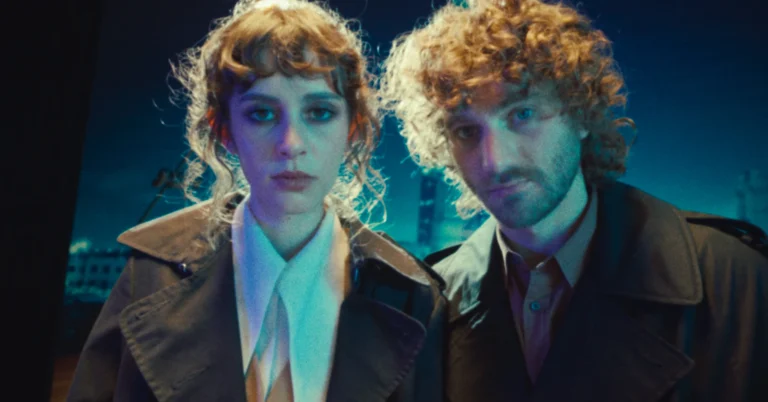
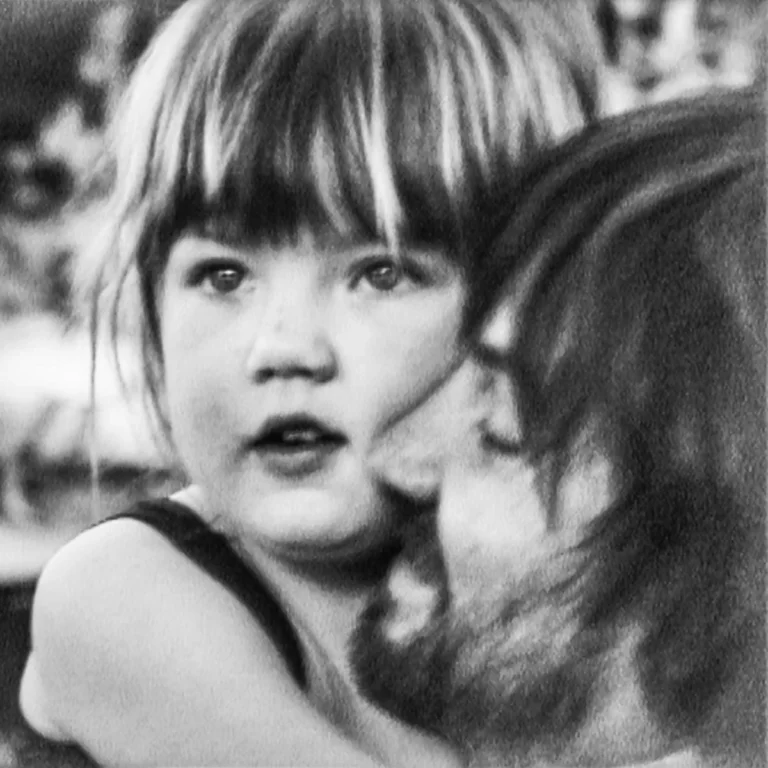
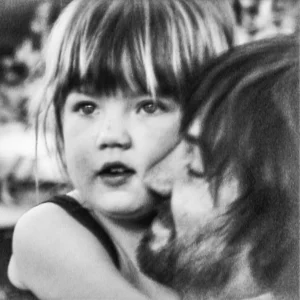 Tame Impala is back with
Tame Impala is back with 


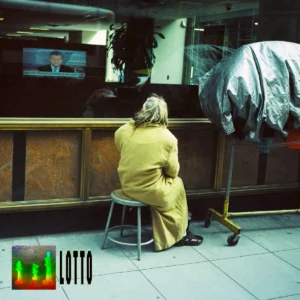 They Are Gutting a Body of Water have come through with their best and most visceral album,
They Are Gutting a Body of Water have come through with their best and most visceral album, 
 As cheeky as it is punchy, the latest effort from the London trio bar italia takes its name from the 1959 film starring Marilyn Monroe, Tony Curtis, and Jack Lemmon about a group of rogue musicians looking for an adventure. Nina Cristante, Jezmi Tarik Fehmi, and Sam Fenton trade vocals in ways that sound detached, but there’s more vulnerability here than meets the surface. The record includes the previously released singles
As cheeky as it is punchy, the latest effort from the London trio bar italia takes its name from the 1959 film starring Marilyn Monroe, Tony Curtis, and Jack Lemmon about a group of rogue musicians looking for an adventure. Nina Cristante, Jezmi Tarik Fehmi, and Sam Fenton trade vocals in ways that sound detached, but there’s more vulnerability here than meets the surface. The record includes the previously released singles  bloodsports’ blistering debut album innervates the New York band’s slowcore foundations, its volatile songs often beginning with spare, somber guitar parts before bursting with noise. “For me at least, what I was into at the time is I just wanted to pile on as much as we possibly could,” guitarist Jeremy Mock said in our
bloodsports’ blistering debut album innervates the New York band’s slowcore foundations, its volatile songs often beginning with spare, somber guitar parts before bursting with noise. “For me at least, what I was into at the time is I just wanted to pile on as much as we possibly could,” guitarist Jeremy Mock said in our 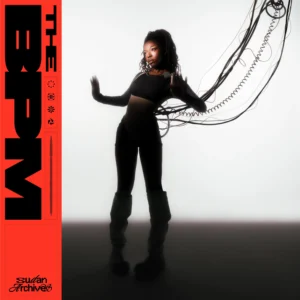 Sudan Archives has followed up her 2022 breakout Natural Brown Prom Queen with a bold, kinetic, vulnerable LP called
Sudan Archives has followed up her 2022 breakout Natural Brown Prom Queen with a bold, kinetic, vulnerable LP called  Helen Ballentine’s songs are instantly disarming. Her new Skullcrusher album,
Helen Ballentine’s songs are instantly disarming. Her new Skullcrusher album, 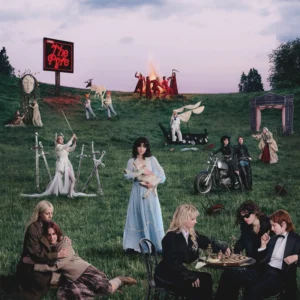 The Last Dinner Party continue to naturally lean into over-the-top lyricism and intricate arrangements on
The Last Dinner Party continue to naturally lean into over-the-top lyricism and intricate arrangements on 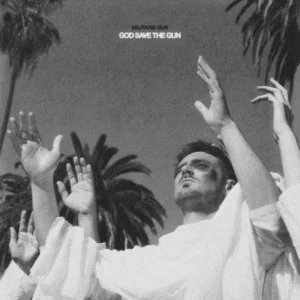 Militarie Gun’s new album
Militarie Gun’s new album  Iceage’s Elias Rønnenfelt made his new album Speak Daggers in his bedroom between tours. Slinkier, darker, and altogether weirder than his 2024 solo debut Heavy Glory, the record finds the Danish singer-songwriter collaborating with the likes of Erika de Casier and Fine. The song ‘Not Gonna Follow’ repurposes material Rønnenfelt recorded with reggae icons the Congos and I-Jahbar when he visited Jamaica a few years ago.
Iceage’s Elias Rønnenfelt made his new album Speak Daggers in his bedroom between tours. Slinkier, darker, and altogether weirder than his 2024 solo debut Heavy Glory, the record finds the Danish singer-songwriter collaborating with the likes of Erika de Casier and Fine. The song ‘Not Gonna Follow’ repurposes material Rønnenfelt recorded with reggae icons the Congos and I-Jahbar when he visited Jamaica a few years ago. Internal Drone Infinity is off to a jarring start, which I won’t spoil, but Living Hour quickly find the perfect balance between tenderness and noise. It finds the band reuniting with Jay Som’s Melina Duterte, who worked on 2022’s Someday Is Today. “I wrote a lot of the songs while working as a projectionist at a movie theater and on airplanes,” bandleader Sam Sarty explained. “Both places have a little window you look out of to see things move while you sit down. It’s a strange feeling to be completely still while watching the rest of the world moving in a frame.” It ends with a striking lyrical image: “Pregnant and thick/Wide with consciousness/ Rivers flowing all around us/ And we’re thankful for them.”
Internal Drone Infinity is off to a jarring start, which I won’t spoil, but Living Hour quickly find the perfect balance between tenderness and noise. It finds the band reuniting with Jay Som’s Melina Duterte, who worked on 2022’s Someday Is Today. “I wrote a lot of the songs while working as a projectionist at a movie theater and on airplanes,” bandleader Sam Sarty explained. “Both places have a little window you look out of to see things move while you sit down. It’s a strange feeling to be completely still while watching the rest of the world moving in a frame.” It ends with a striking lyrical image: “Pregnant and thick/Wide with consciousness/ Rivers flowing all around us/ And we’re thankful for them.” Upon announcing her sophomore album
Upon announcing her sophomore album 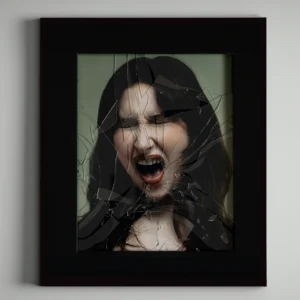 In 2023, Carlyn Bezic and her band were on the side of the road when a semi-truck crashed into their van. Bezic wrote Jane Inc.’s new album,
In 2023, Carlyn Bezic and her band were on the side of the road when a semi-truck crashed into their van. Bezic wrote Jane Inc.’s new album, 







